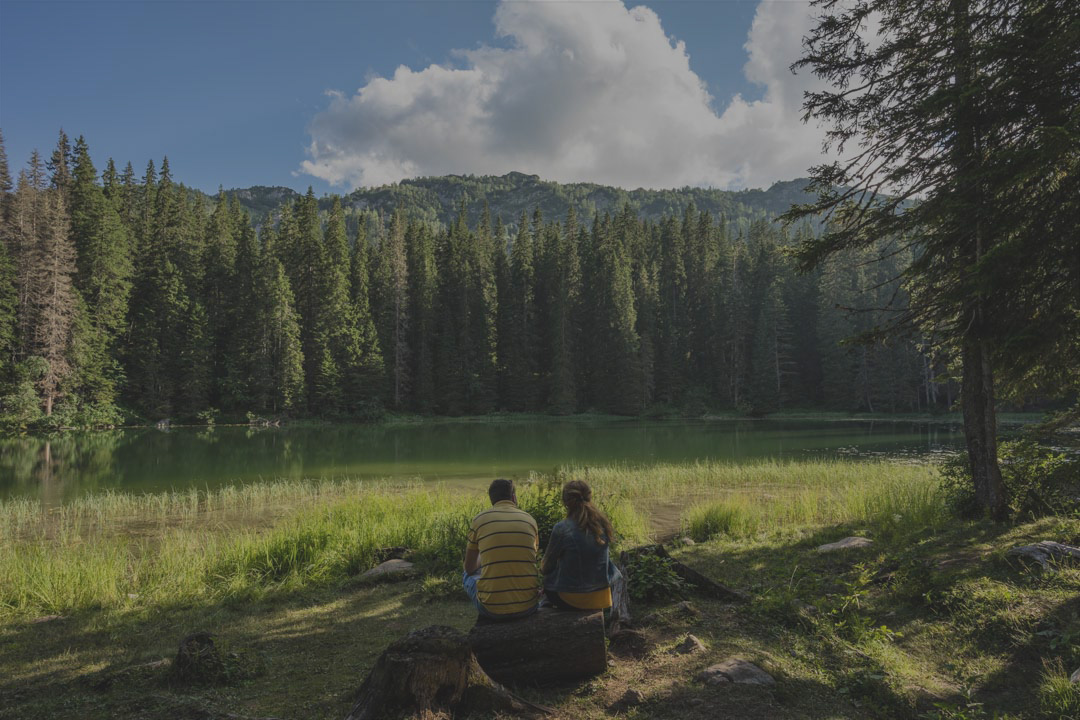OFFICIAL NAME: Montenegro
AREA: 13,812 km2
POPULATION: 622,218
OFFICIAL LANGUAGE: Montenegrin
CAPITAL: Podgorica
POPULATION OF THE CAPITAL: 187,085
Montenegro : Crna Gora / Црна Гора, meaning “Black Mountain”) is a state in Southeastern Europe. It has a coast on the Adriatic Sea to the southwest and is bordered by Croatia to the west, Bosnia and Herzegovina to the northwest, Serbia to the northeast, Kosovo to the east, and Albania to the southeast. Its capital and largest city is Podgorica, while Cetinje is designated as the Old Royal Capital.
Natural environment including mountains, rivers, lakes and so on.
Montenegro ranges from high peaks along its borders with Serbia, Kosovo, and Albania, a segment of the Karst of the western Balkan Peninsula, to a narrow coastal plain that is only 1.5 to 6 kilometres (1 to 4 miles) wide. The plain stops abruptly in the north, where Mount Lovćen and Mount Orjen plunge into the inlet of the Bay of Kotor.
Montenegro’s large Karst region lies generally at elevations of 1,000 metres (3,280 ft) above sea level; some parts, however, rise to 2,000 m (6,560 ft), such as Mount Orjen(1,894 m or 6,214 ft), the highest massif among the coastal limestone ranges. The Zeta River valley, at an elevation of 500 m (1,600 ft), is the lowest segment.
The mountains of Montenegro include some of the most rugged terrain in Europe, averaging more than 2,000 metres (6,600 feet) in elevation. One of the country’s notable peaks is Bobotov Kuk in the Durmitor mountains, which reaches a height of 2,522 m (8,274 ft). Owing to the hyperhumid climate on their western sides, the Montenegrin mountain ranges were among the most ice-eroded parts of the Balkan Peninsula during the last glacial period.
Montenegro is a member of the International Commission for the Protection of the Danube River, as more than 2,000 km2 (772 sq mi) of the country’s territory lie within the Danube catchment area.
CONTACT
Mr Ranko Kankaraš.
Chief Forestry Department
Ministry of Agriculture and Rural Development of Montenegro
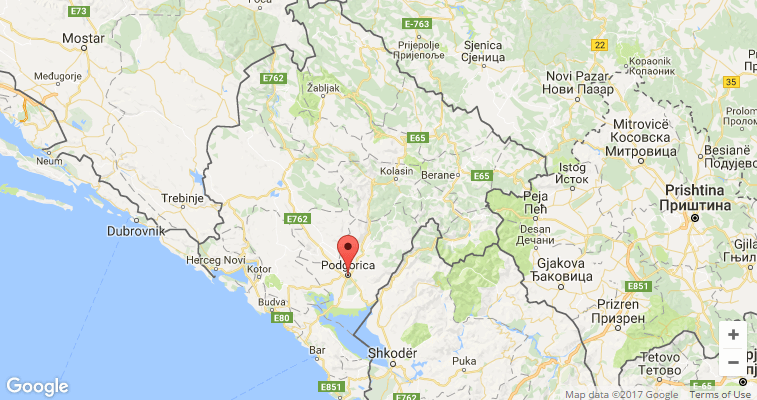
MONTENEGRO’S FORESTRY AND FORESTS
Forest area
Montenegro’s land area is characterised by a high coverage with forest of 59.5% (826 782 ha,
and forestland of 9.9 % (137 480 ha), together forest and forestland cover 69.4% (964 262 ha) of the land area .
Montenegro’s forests are located partly on very steep and rocky slopes; in total thus 11.9 % of the forest area and 8.4 % of the forestland area have not been accessible for tree measurement. The estimate for the wood volume in the total forest of Montenegro is 122 Mio m³ with an increment of 2.9 Mio m³ and based on the assumption that the inaccessible forests show relative volumes per ha that are one third below the level of accessible forests.
This, while the wood volume in accessible forests that cover 728 133 ha amounts to 116 Mio m³ with an increment of 2.8 Mio m³ (assessed with a relative standard error of 1.5 %).
The information available on the forests in Montenegro was mainly relaying on data from forest management in public forests in the central and northern part of Montenegro. Major statistical properties are considerably different to so far existing best estimates that have been published in the National Forest Policy, the Spatial Plan of Montenegro Until 2020 in 2008 and in the report State of Europe’s Forest 2011:
o Forest area (now at 59.5 %, so far estimated at 45 %),
o Volume (122 mio m³ vs. 72 mio m³) and
o Volume increment (2. 9 mio m³ vs. 1.4 mio m³).
Forest classification
Definition: The origin of a forest may either be plantation, natural regeneration or a combination of these and is recorded in classes as defined below.
This attribute is assessed for forest but not for forest land.
The stand origin is determined with direct evaluation on the field using all evidence available
or based on the prior descriptions. If a clear differentiation between artificial regeneration and
natural regeneration is not possible, natural regeneration is assumed. If for a tree the decision
between vegetative propagation origin and origin form a seedling is not possible then origin from a seedling is assumed.
Table – List of classes for the attribute “Stand origin”
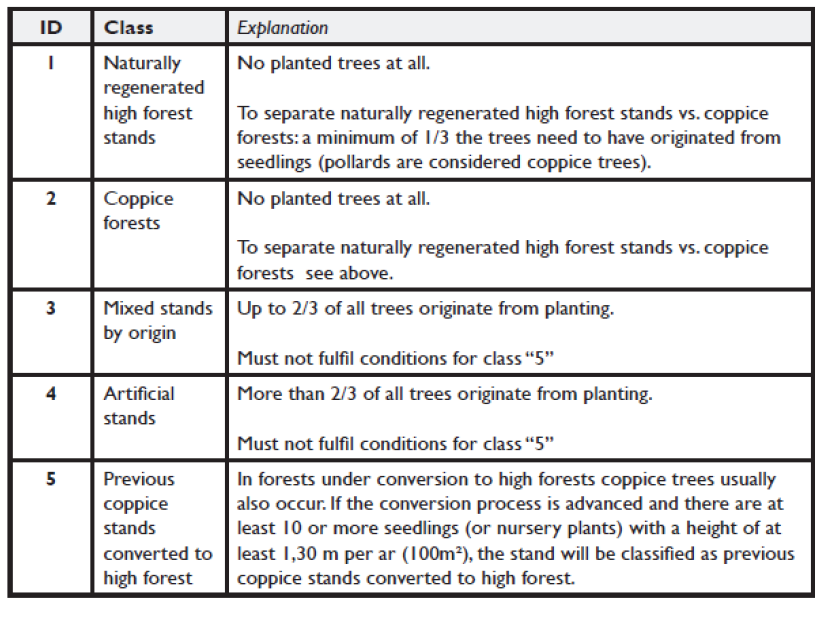
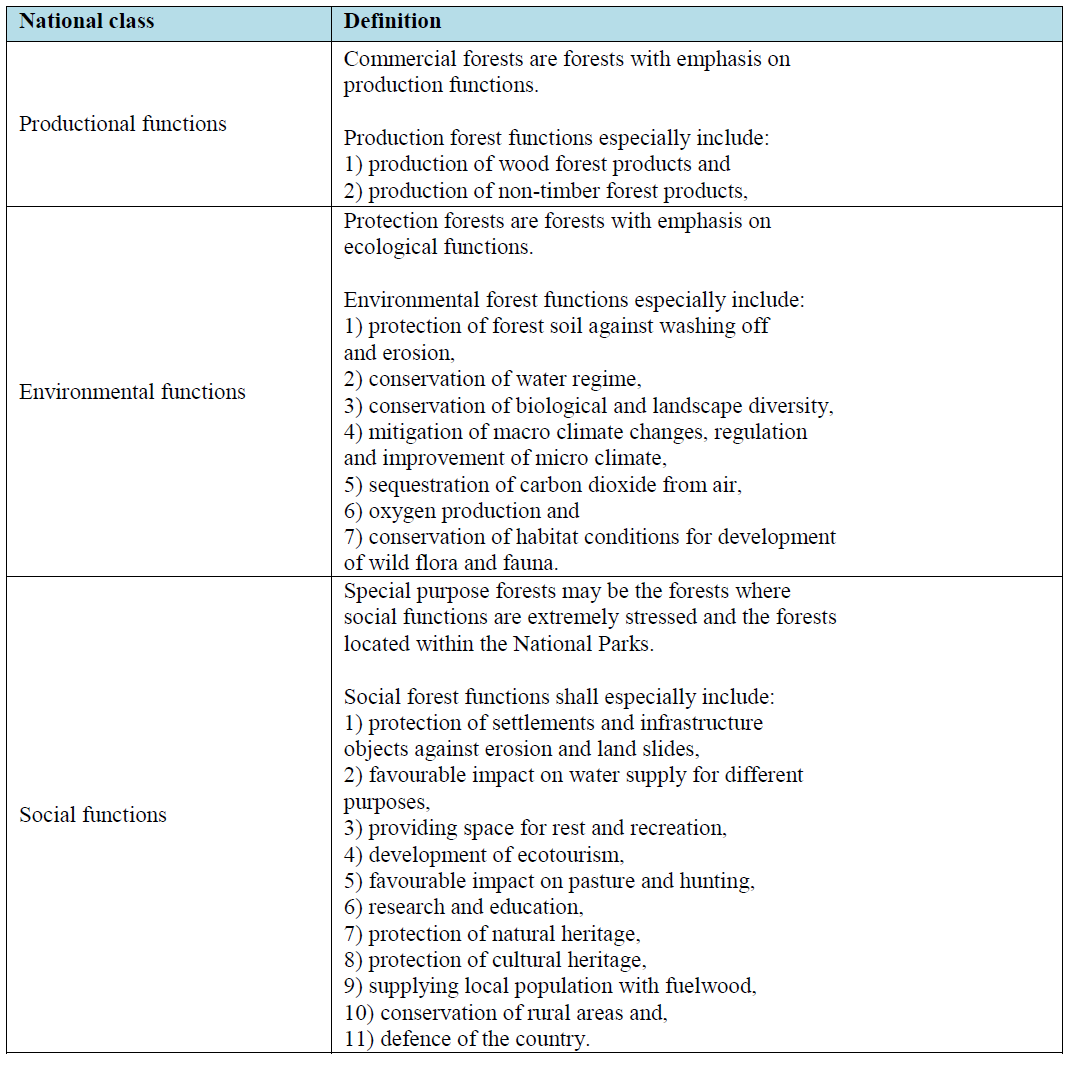
ECONOMIC ASPECTS OF FORESTS
Forest Management
Institutions associated with forestry
1Governmental organizations;
2Non-governmental organizations.
Forests available for wood supply are all forests outside national parks that are accessible and that are not subject to further substantial legal or natural harvesting restrictions.
Forests available for wood supply include forests with multiple functions, such as e.g. soil protection, avalanche protection or recreation where harvesting can still take place based on adequate management.
Considering ownership and protection by national park four different management regimes exist in Montenegro:
- Management of the public forests outside National Parks by the Forest Administration
- Management of private forests outside National Parks by private forest owners supported by the Forest Administration
- Management of the public forests inside National Parks by the National Park Administration
- Management of private forests inside National Parks by private forest owners supported by the National Park Administration
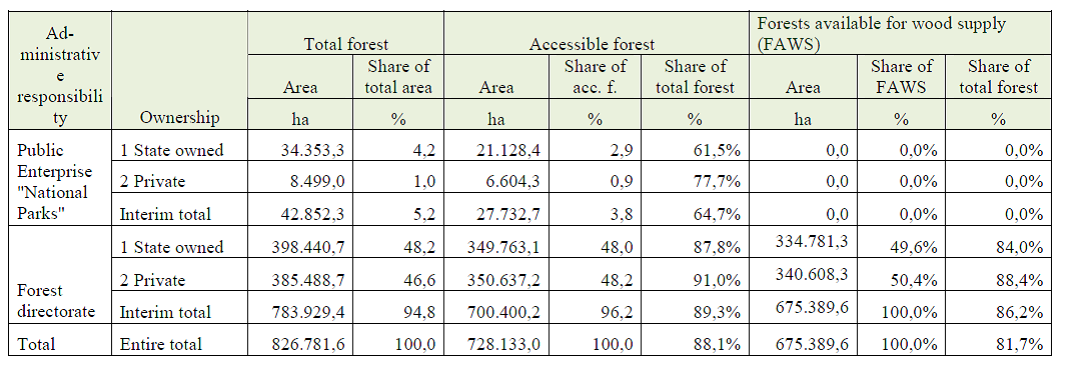
Forestry employment
1The number of employees in forestry;
2The dynamic variation of the number of employees in forestry.
| 1.2 | Human Resource Analysis: | ||||
| SECTOR |
Number of employees
|
STRUCTURE | |||
| 1.2.1 | Staff number development | Public Sector | 472 | 425 | Forest Administration |
| 10 | MARD | ||||
| 11 | Forest Inspection | ||||
| 26 | Forestry school and other | ||||
| Private sector | 1409 | Employed in 143 factories and the Forest institute – Podgorica and Forest Nursery – VIR Niksic | |||
| In addition, there are about 300 employed under contemporary contracts (seasonal workers) | |||||
| 1.2.6 | HR management structures | Public Sector | MARD | Minister – General director of directorate for forestry, hunting and wood industry – 5 sectors (Monitoring, Advisory, International, Hunting and Wood industry) + FA | |
| Forest inspection | Inspection directorate – Directorate for forestry (Chief inspector) – 16 inspectors | ||||
| Forest Administration | MARD – Director of FA – 4 sub sectors (commercial, advisory, utilization and management) and 13 regional units with its directors
http://www.upravazasume.me/display.php?id=45&main_id=27 |
||||
| Education | Director – teacher/trainer | ||||
| Organization | Owner – Board of directors – executive director – Chief of sector | ||||
| Private sector | Owner decision | Owner +- director – Chief -worker | |||
Forest ownership
1The area and percentage of the forest ownership including private and sate owned and public forest
The share of state forests by NFI is 52.3%, and private 47.7%.
When it comes to forest land dominates private ownership with 58.0%.



Forestry policy
1A brief description of the Forest-related policies and laws
Investigation and monitoring of forestry resources
Adoption of the National Forest Policy,(2008)
National strategy of sustainable development (2007)
Strategy of forest end forestry (2016)
The National Action Plan to combat illegal activities in forestry adopted (2009)
The National Action Plan of utilisation of wood biomass in Montengro (2014)
Law on forests, adopted (2010)
Montenegro’s first Forestry Forum, organized (2010)
The first National forest Inventory, (2013)
NATURA 2000 – (2016 -2018)
Montenegro’s Institutions associated with forestry
Biotechnical Faculty in Podgorica (study program Plant Production), Hunting and game
Faculty of Mechanical Engineering (study course Mechanical wood processing – program implemented in Pljevlja),
Faculty of Metallurgy and Technology in Podgorica (study programs: Protection of life environment, chemical technology (ecological orientation).
Continuing education in postgraduate studies is offered by the following organizational units of the University of Donja Gorica:
– Faculty of Polytechnics, UDG (postgraduate program – Ecology, urbanism and
Spatial Planning);
– Faculty of International Economics, Finance and Business, UDG (postgraduate program
Environmental Management).
– Institute of forestry, Podgorica, Montenegro – research institution
– Secundary forestry school in Montenegro, Berane
Stay informed
Get the latest news and information about CEEC to China –forestry mechanism.

